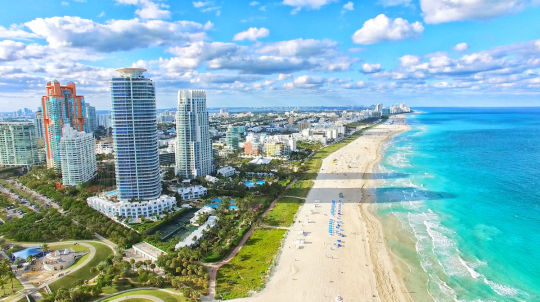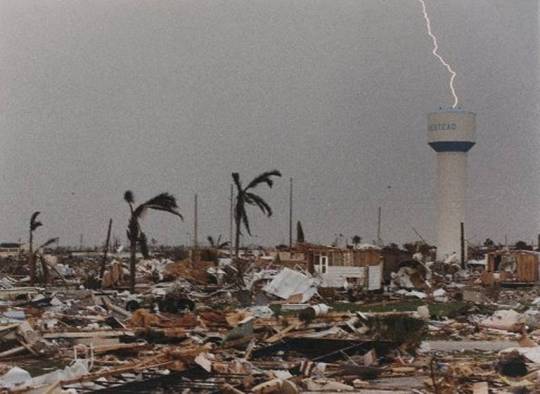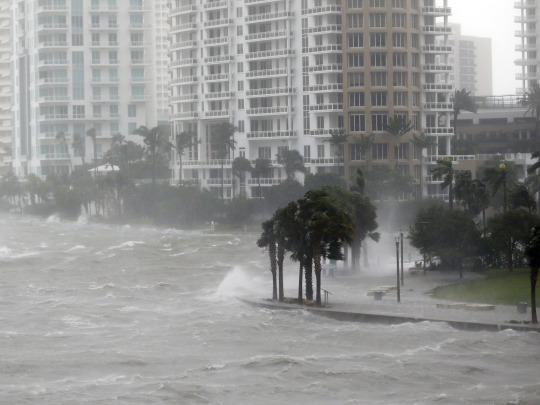Don't wanna be here? Send us removal request.
Text
Miami’s Preparedness and Mitigation Strategies for Hurricanes

The City of Miami
Miami is a beautiful low-lying coastal city; it attracts thousands of tourists each year and boasts beautiful architecture, as well as miles of beaches. There is one thing, however, this city in particular is vulnerable to. Due to Miami's tropical climate and close proximity to the Atlantic Ocean, it is frequently a target for hurricanes. More specifically, in the month of September, Miami is at very large risk of being hit by hurricanes. Though hurricanes don't seem to deter tourists and residents away, the impact they have had on this city have been devastating.
How Does Miami Mitigate and Prepare for Hurricanes?
In this blog we will go into depth on how Miami prepares their city in order to protect it from hurricanes. Also, we will see how Miami goes about mitigating the effects that come with hurricanes. Not only is Miami’s low sea level height an aggravating factor for hurricanes, but so is climate change; later on, we will discuss the controversy of climate change and how Miami is dealing with the effects that come with it. The earth’s changing climate is increasing both the severity and regularity of hurricanes.
Miami’s Preparation Plan for Hurricanes
If a weather radar were to detect a hurricane whose path is heading towards Miami, Miami has a certain preparation plan which they will enact. It is important to mention that Miami recommends their residents follow the hurricane guide whether there be a hurricane watch, or a hurricane warning. A hurricane watch is issued when a hurricane is predicted to strike the given area in 48 hours, whereas, a hurricane warning is issued when a hurricane is expected to hit the area in 36 hours (2). First, Miami recommends that residents should either prune trees themselves or hire a contractor to ensure trees are hurricane ready. Pruning trees allows the tree to grow stronger, and it also prevents dead tree branches from causing damage to property. Secondly, if someone is a boat owner in Miami, Miami recommends that even before a hurricane watch is issued, boat owners should relocate their boats inland (2). In hurricane preparation, Miami also holds that it is important to check and make sure your gutter flows properly and has no clogs. A faulty gutter can end up causing extensive damage to your roof. The final step of hurricane preparation is to follow evacuation orders if given by the city of Miami. If an evacuation notice is in effect, it is required that everyone must leave the city (2). Miami provides public transportation to those who need it for evacuating.
Miami’s Hurricane Mitigation Strategies
Before hurricane Andrew happened in Florida in 1992, there were no regulations for buildings to be designed to be hurricane ready; hospitals and essential businesses weren’t required to have generators, there were no codes for buildings to follow, etc. Richard Olsen, the director of the international hurricane research center at Florida International University, when asked about hurricane Andrew stated, “It was a marker event in the history of South Florida and for Florida in general. Nothing was ever the same in terms of mitigation and preparedness” (5). After hurricane Andrew, bills were passed that required supermarkets, gas stations and hospitals to be equipped with generators. The addition of generators allows stores and hospitals to open quickly after a hurricane strikes (5). Miami has learned from hurricane Andrew, and now has cracked down on bills to ensure mitigation efforts in their city will be boosted. Many schools and public buildings in Miami have received funding from the city to reinforce their buildings and install shelters (1). Also, Miami has added building codes that mean residents have to have reinforced roof sheathing, secondary water barrier roof protection, as well as use ring shank nails (hurricane grade nails) (1).

Miami After Hurricane Andrew (7).
The Controversy of Climate Change
With regards to hurricane preparation and mitigation, Miami is now facing a bigger and bigger challenge each year as the sea level is only continuing to rise. Buildings and the design of the city must be constructed in order to be able to handle the flooding that comes with hurricanes and the rising of the sea. According to the mayor of Miami, “by 2025, Miami Beach hopes to spend $400 million to elevate 60% of its roads, which will receive new drainage systems, pavement, and sewer and water systems as needed ” (3). Also, as of August 2017, Miami has completed 3 miles out of the 260 planned miles (by now they are much further) (3). Hurricanes almost always cause flooding, however, with climate change in the picture, the flooding that comes with hurricanes has become catastrophic. With Miami’s sea level being so low, they are now seeing storm surges that are becoming hard to manage. Thus, Miami has started to install 80 pump stations throughout the city. Sea level rise from climate change has also changed the way Miami must prepare for hurricanes. In preparation for hurricane Dorian, the city manager stated they were “cleaning out storm drains, vacuuming out our system to make sure its flowing as efficiently as possible. We’re locating 10 temporary pumps around the city and 16 temporary generators for pumps that are already in place” (4). In order to protect from storm surges due to climate change, Miami recognizes that natural environments are the most effective; the waterkeeper of Miami states, “We know there is really valuable protection from storm surge given by natural infrastructure like coral reefs, mangroves, dunes and things like that" (6). Accordingly, the corps’ plan calls for extensive planting of mangroves along residential areas (6).

Hurricane Storm Surge in Miami (6).
What I’ve Learned
Through researching the topic of how Miami both mitigates and prepares for hurricanes, I have learned many things. Moreover, I first learned that Miami has taken into account past hurricanes and the effects they have had on their city. More specifically, since hurricane Andrew, Miami has now required hospitals, stores, and other essential businesses to have backup generators in order to get their business up and running as soon as possible after the strike of a hurricane. I also learned that Miami requires public buildings to have reinforced shelters, resident homes to have hurricane grade roof sheathing/secondary water barrier roof protection and hurricane grade nails. Finally, through my research in this topic, I have learned how much of an aggravating factor climate change is for hurricanes; a rise in temperature causes the sea level to rise, as an increase in temperature causes glaciers to melt and water to swell. Finally, I learned that due to climate change, Miami has put millions of dollars towards flood mitigation strategies: such as raising roads and providing extra water pumps in the city. All in all, hurricanes have proven to be a consistent economical problem for Miami that will only get worse in magnitude and in frequency due to climate change.
Endnotes
Rollason, Frank. Before a Hurricane, 2020, www.miamidade.gov/global/emergency/hurricane/before-hurricane.page.
Tear, Charles. “Miami Beach Hurricane Guide.” 2017, www.miamibeachfl.gov/wp-content/uploads/2017/08/Hurricane-Guide-Eng-2017.pdf.
Garfield, Leanna. “How Miami Has Prepared for Sea Level Rise and Monstrous Hurricanes like Irma.” Business Insider, Business Insider, 8 Sept. 2017, www.businessinsider.com/miami-hurricane-irma-sea-level-rise-preparation-2017-9.
Harris, Alex, and Joey Flechas. “Hurricane Dorian Could Hit during King Tide, and Miami Is Preparing to Flood.” Catalyst Miami, www.catalystmiami.org/hurricane_dorian_could_hit_during_king_tide_and_miami_is_preparing_to_flood_jgkwchuznosh3gb10yjsfg.
Alvarez, Lizette, and Marc Santora. “After Andrew, Florida Changed Its Approach to Hurricanes.” The New York Times, The New York Times, 6 Sept. 2017, www.nytimes.com/2017/09/06/us/hurricane-andrew-miami.html?auth=login-google.
Allen, Greg. “A $4.6 Billion Plan To Storm-Proof Miami.” NPR, NPR, 13 June 2020, www.npr.org/2020/06/13/875725714/a-4-6-billion-plan-to-storm-proof-miami.
Miami, et al. “Destruction at Dawn: What Hurricane Andrew Did to South Florida on August 24, 1992.” Miamiherald, Miami Herald, www.miamiherald.com/news/weather/hurricane/article32006499.html.
2 notes
·
View notes